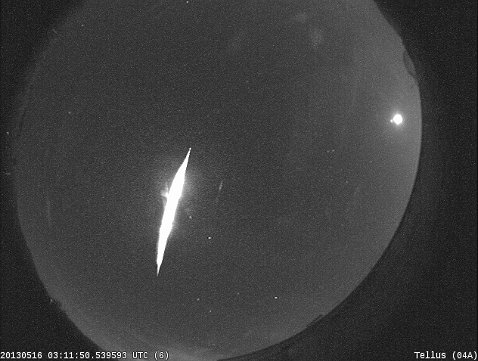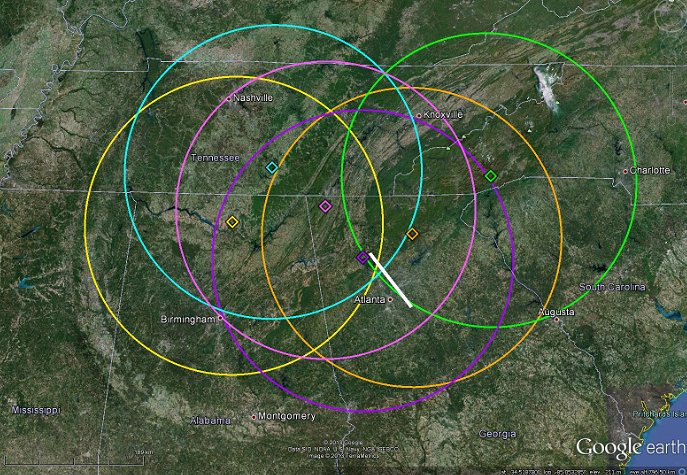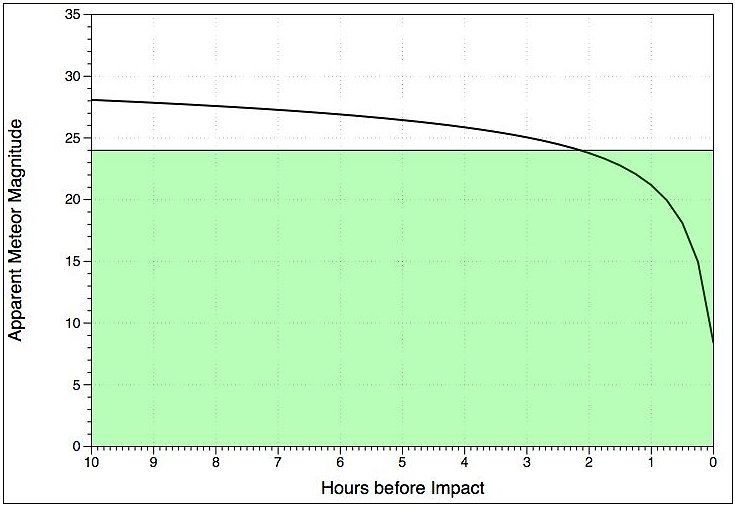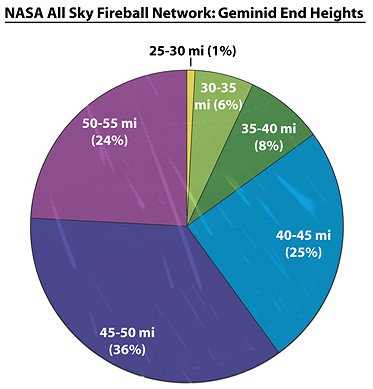The NASA All Sky Fireball Network detected this beauty on May 16, 2013 at 03:11:50 UTC. Observed by 6 meteor cameras, this fireball penetrated deep into the atmosphere, making it down to an altitude of 36 km (22 miles).

A view of the fireball from Cartersville, Georgia. (NASA/MEO)
The 350 gram meteoroid responsible for this brilliant display entered the atmosphere at around 22 km/s (49,000 mph) — slow for a meteoroid! — and decelerated to about 10 km/s (22,000 mph) before disintegrating over northwest Georgia.

Map showing the location of 6 cameras in the NASA All Sky Fireball Network. Color-coded circles indicate the approximate field of view of each camera. The meteor’s path is shown in white. (NASA/MEO/D. Moser)
Calculations indicate a radiant in the constellation Libra.




